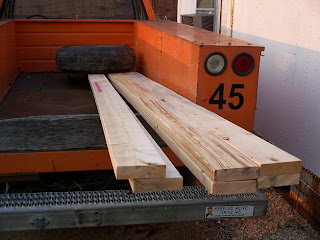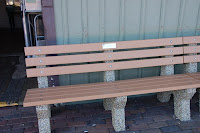
Note: These photographs are copyrighted and may not be reproduced without permission.
The Illinois Terminal Railroad was perhaps best known for its distinctive main-line interurban cars with their flat-top arched roofs, three-window fronts, massive radial couplers and other features designed by the road’s master mechanic, J. M. Bosenbury.  These cars were all built between about 1907 and 1915, and held down most long-distance passenger service until the end in 1956. Seven of these cars survive, five of them at IRM.
These cars were all built between about 1907 and 1915, and held down most long-distance passenger service until the end in 1956. Seven of these cars survive, five of them at IRM.
Builder's interior photo of this series of car. The only major change between then and now is that the interior art glass windows were replaced with pieces of Masonite painted to match the rest of the varnished mahogany woodwork.
Car 518 was one of an order of twelve cars (516 to 527) from the St. Louis Car Company in 1911. It was always a trailer and was never motorized. It originally had tongue-and-groove wood siding and was painted
In the twenties the paint scheme changed to traction orange, with maroon trim, which is what all of our cars have been restored to. At some later time (before 1938) the wood sides were covered with sheet metal, held on with round-head wood screws. The sheet metal also covered over the outer stained glass windows, which are still there. During WWII, we believe, it was equipped with a trolley pole to facilitate back-up movements by an attached motor car, but there was never any control equipment. The pole was later removed. Otherwise, it was little changed during forty years of continuous passenger service. It appears that the 518 was never painted in the later IT blue-and-silver paint scheme.
The 518 on October 29, 1950. The pole is no longer being used: there's no retriever, it's just tied down. It will soon be removed. Photo from the Ray Burmaster collection.
Of the other cars in this series, the 527 was rebuilt into the bedroom car Illinois in 1930. The 525 was destroyed by fire in 1930 and the 526 on Christmas Day in 1950. Most of the others were scrapped between 1950 and 1952. The Illinois was later renumbered as 535, and the body is still in existence, serving as a residence next to the IT substation building in Harristown.



By 1968, Mr. Klebolt had moved to San Francisco and interest in preserving the equipment waned. The railroad cars were donated to IRM and moved to Union on their own wheels.

Here they were repainted to the Illinois Terminal’s orange paint scheme, and needed repairs were made. And the 518 had its trolley pole reinstalled, so that the 277 could be operated with it on our railroad, where there are no turning facilities at either end. It has been maintained in good condition over the years; it has been stored inside since the Lester barn was constructed in 1975.
The interior of the 518 in Sept. 1969. Photo by Glenn Monhart.
The interior of the 518 in Oct. 2008. Photo by Randall Hicks.
Our current plans are to make the necessary repairs to the 277 so that it can operate with the 518 in occasional revenue service. The 518 will once again be serving in an educational role, this time as a demonstration of what interurban service was like at its zenith.











































